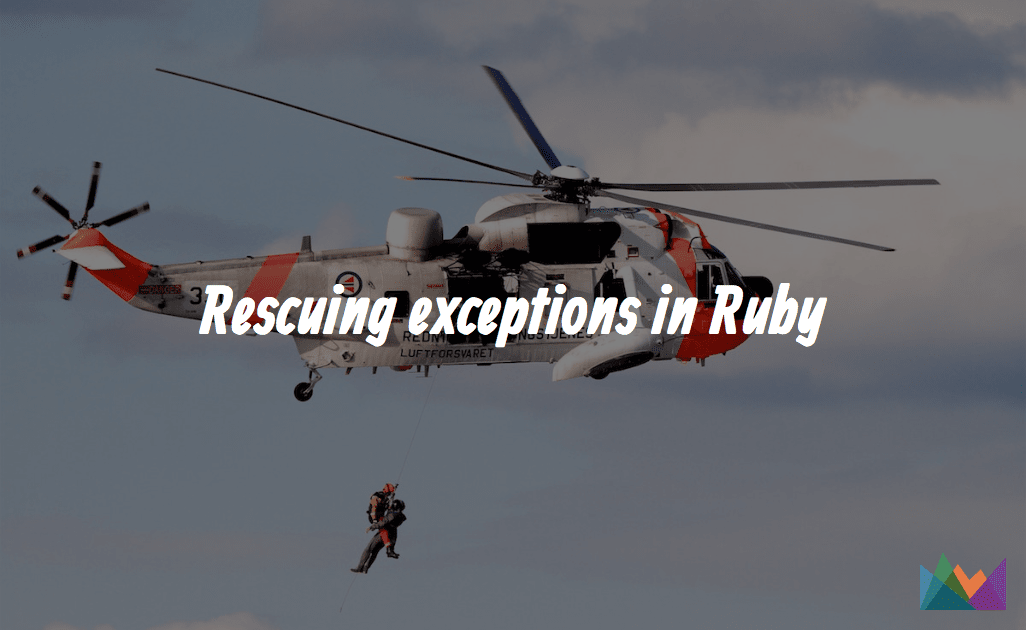Ruby s standard classes and modules raise exceptions.
Ruby catch exception.
This article will discuss the use of exceptions and show some examples of how to deal with them.
The ruby standard library defines about 30 different subclasses of exceptions some of which have their own subclasses.
An exception is a special kind of object an instance of the class exception or a descendant of that class that represents some kind of exceptional condition.
The other day i was searching for an introduction to ruby exceptions written for beginners people who know basic ruby syntax but aren t really sure what an exception is or why it s useful.
By default ruby programs terminate when an exception occurs.
The block is executed normally until a throw is encountered.
When ruby encounters a throw statement like a good matchmaker she walks back up the execution stack catch me a catch looking for a suitable catch.
Ruby has a distinctive language feature that consists of pairs of throw and catch statements.
Throw keyword generates an exception and whenever it is met the program control goes to the catch statement.
A beginner s guide to exceptions in ruby.
Catch and throw is similar raise and rescue keywords exceptions can also be handled using catch and throw keywords in ruby.
When ruby encounters a throw it zips back up the call stack looking for a catch block with a matching symbol.
An exception is an unwanted or unexpected event which occurs during the execution of a program i e at runtime that disrupts the normal flow of the program s instructions.
Catch defines a block that is labeled with the given name which may be a symbol or a string.
All the exception classes form a hierarchy with the class exception at the top.
The throw catch paradigm works similarly to raise and rescue.
The block is executed normally until a throw is encountered.
When it finds it ruby unwinds the stack to that point and terminates the block.
Here s some code to illustrate.
When this occurs an exception is raised or thrown.
The exception mechanism in ruby is very powerful but often misused.
It indicates that something has gone wrong.
As we know the code enclosed between begin and end block is totally secured for handling exceptions and the rescue block tells the ruby the type of exception is to be.
Catch lable name do matching catch will be executed when the throw block encounter throw lable name.

